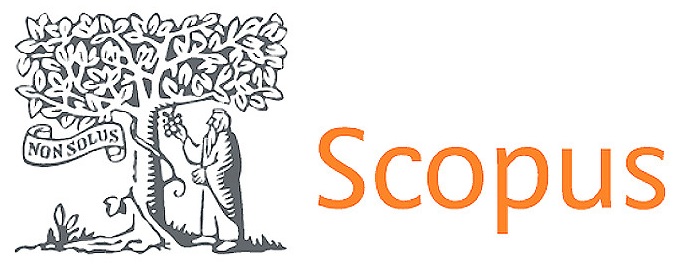Interactive strategies for teaching history: The impact of Genially on motivation and learning
DOI:
https://doi.org/10.56294/mw2024634Keywords:
Genially, ICT, history teaching, interactive methodologies, educational innovationAbstract
Introduction: The advance of Information and Communication Technologies (ICT) has transformed education, favoring the implementation of innovative teaching strategies. In this context, the use of the digital tool Genially has made it possible to energize the teaching of History, encouraging the active participation of students. This study focused on designing and evaluating interactive strategies based on Genially, with the aim of improving the learning of historical content and developing critical thinking in secondary education students.
Development: of a qualitative methodological approach, case studies, classroom observations and surveys aimed at students and teachers were carried out. The results showed that the integration of Genially in the teaching of History increased student motivation, facilitated the understanding of historical events and improved knowledge retention. In addition, the use of interactive resources, such as timelines and concept maps, promoted more autonomous and meaningful learning. However, challenges such as the digital divide and the need for teacher training in the pedagogical use of digital tools were identified.
Conclusion: The study showed that Genially is an effective tool for improving the process of teaching and learning history, as it promotes a more visual, interactive and participatory learning. However, to ensure its effective implementation, it is essential to reduce the digital divide and strengthen teacher training in the design of innovative teaching strategies.
References
1. Aguilera Hintelholher R. Identidad y diferenciación entre método y metodología. Estudios Políticos. 2013;(28):81-103. Disponible en: https://www.scielo.org.mx/pdf/ep/n28/n28a5.pdf
2. Arias-Gómez J, Villasís-Keever MÁ, Novales MGM. El protocolo de investigación III: la población de estudio. Rev Alergia Mex. 2016;63(2):201-206.
3. Bullón-Solís O. Educación virtual interactiva como metodología para la educación: Revisión de literatura. Crescendo. 2020;11(2):225-238. Disponible en: https://www.researchgate.net/publication/348920249_Educacion_virtual_interactiva_como_metodologia_para_la_educacion_revision_de_literatura
4. Cabero J. Las tecnologías interactivas en la enseñanza: potencialidades y desafíos. Rev Tecnol Educ. 2020;33(2):56-72. Disponible en: https://dialnet.unirioja.es/servlet/autor?codigo=3643308
5. Cáceres NE. La motivación y la dinamización en la enseñanza universitaria. Madrid: DIKINSON, S.L.; 2023.
6. Campillo Ferrer J, Miralles Martínez P, Sánchez Ibáñez R. La enseñanza de ciencias sociales en educación primaria mediante el modelo de aula invertida. Rev Interuniv Form Prof. 2019;33(3):347-362. Disponible en: https://www.redalyc.org/journal/274/27466132020/27466132020.pdf
7. Carneiro RT. Los desafíos de las TIC o para el cambio educativo [Internet]. 13 de agosto de 2021. Disponible en: https://www.oei.es/uploads/files/microsites/28/140/lastic2.pdf
8. Carrizo B. Diseño de contenidos digitales para docentes del secundario del Santa Ana [Internet]. 15 de abril de 2022. Disponible en: https://repositorio.21.edu.ar/handle/ues21/24895
9. Código de la Niñez y Adolescencia. Congreso Nacional del Ecuador. Registro Oficial 737 de 3 de enero del 2003 [Internet]. Disponible en: https://www.acnur.org/fileadmin/Documentos/BDL/2014/9503.pdf
10. EIKONOS. Cómo integrar los contenidos interactivos en el mundo de la educación [Internet]. 2023. Disponible en: https://eikonos.com/blog/como-integrar-los-contenidos-interactivos-en-el-mundo-de-la-educacion/
11. Espinosa MP. Formar para el emprendimiento digital: construyendo los ciudadanos del siglo XXI. RIITE Rev Interuniv Investig Tecnol Educ [Internet]. 1 de junio de 2022. Disponible en: https://revistas.um.es/riite/article/view/525101
12. Fernández D. Barreras en la capacitación tecnológica del profesorado de ciencias de la salud. Un estudio de caso. Rev Int Investig Cienc Soc. 2024;20(1):89-102. https://doi.org/10.18004/riics.2024.junio.89
13. Fernández L, García M. El uso de herramientas digitales interactivas en la enseñanza de la Historia: una aproximación desde la formación docente. Rev Innov Educ. 2023;18(3):45-58.
14. Martínez P, Rodríguez E, López S. Tecnologías educativas y su impacto en la motivación estudiantil: el caso de Genially en el aula de Historia. J Educ Technol. 2020;7(2):134-145.
15. Pérez A, Sánchez R. La integración de Genially en la enseñanza secundaria: una revisión de su efectividad en la comprensión de contenidos históricos. Rev Investig Educ. 2022;15(4):232-249.
16. Ruiz T, Gómez F, Martínez J. El potencial de Genially en la enseñanza de la Historia: análisis de una experiencia didáctica. Rev Latinoam Tecnol Educ. 2021;24(1):18-30.
17. García B. Una mirada al método científico [Internet]. 2018. Disponible en: https://www.cab.cnea.gov.ar/ieds/images/extras/hojitas_conocimiento/2020/Garcia_Beatriz_Metodo_Cientifico_CIENCIA_40_319-320.pdf
18. Mejía-Tigre N, García-Herrera D, Erazo-Álvarez J, Narváez-Zurita C. Genially como estrategia para mejorar la comprensión lectora en educación básica. Rev Interdiscip Humanidades Educ Cienc Tecnol. 2020;6(3):520-542. Disponible en: https://dialnet.unirioja.es/servlet/articulo?codigo=8318357
19. Ley Orgánica de Educación Intercultural. Registro Oficial Suplemento 417 de 31-mar.-2011. Última modificación: 19 de abril de 2021 [Internet]. Disponible en: https://gobiernoabierto.quito.gob.ec/Archivos/Transparencia/2021/04abril/A2/ANEXOS/PROCU_LOEI.pdf
20. Salinas J, Marín V, Escandell C. Gamification and digital storytelling in education: A systematic review. J Educ Technol. 2021;45(2):145-160.
21. Prensky M. Digital game-based learning. Paragon House; 2020.
22. Ausubel DP. The acquisition and retention of knowledge: A cognitive view. Springer; 2000.
23. Zagal JP, Mateus C. The impact of interactive tools on historical thinking skills. Digital Learn J. 2022;37(1):25-40.
24. Declaración Universal de los Derechos Humanos. Naciones Unidas. Resolución 217 A (III) del 10 de diciembre de 1948 [Internet]. Disponible en: https://www.un.org/es/about-us/universal-declaration-of-human-rights
25. Constitución de la República del Ecuador. Asamblea Nacional Constituyente. Registro Oficial 449 de 20-oct.-2008 [Internet]. Disponible en: https://www.defensa.gob.ec/wp-content/uploads/downloads/2021/02/Constitucion-de-la-Republica-del-Ecuador_act_ene-2021.pdf
26. Naciones Unidas. Declaración Universal de los Derechos Humanos [Internet]. Resolución 217 A (III) del 10 de diciembre de 1948. Disponible en: https://www.un.org/es/about-us/universal-declaration-of-human-rights
27. Ausubel DP. The acquisition and retention of knowledge: A cognitive view. Springer; 2000.
28. Gee JP. What video games have to teach us about learning and literacy. Palgrave Macmillan; 2018.
29. Prensky M. Digital game-based learning. Paragon House; 2020.
30. Salinas J, Marín V, Escandell C. Gamification and digital storytelling in education: A systematic review. J Educ Technol. 2021;45(2):145-160.
31. Zagal JP, Mateus C. The impact of interactive tools on historical thinking skills. Digital Learn J. 2022;37(1):25-40.
Published
Issue
Section
License
Copyright (c) 2024 Yilena Montero Reyes , Alba Viviana Herrera Córdova , Lucia Efigenia Pardo Capa , Orlando Máximo Torrales Avilés , Betty Alexandra Villalta Leon (Author)

This work is licensed under a Creative Commons Attribution 4.0 International License.
The article is distributed under the Creative Commons Attribution 4.0 License. Unless otherwise stated, associated published material is distributed under the same licence.






